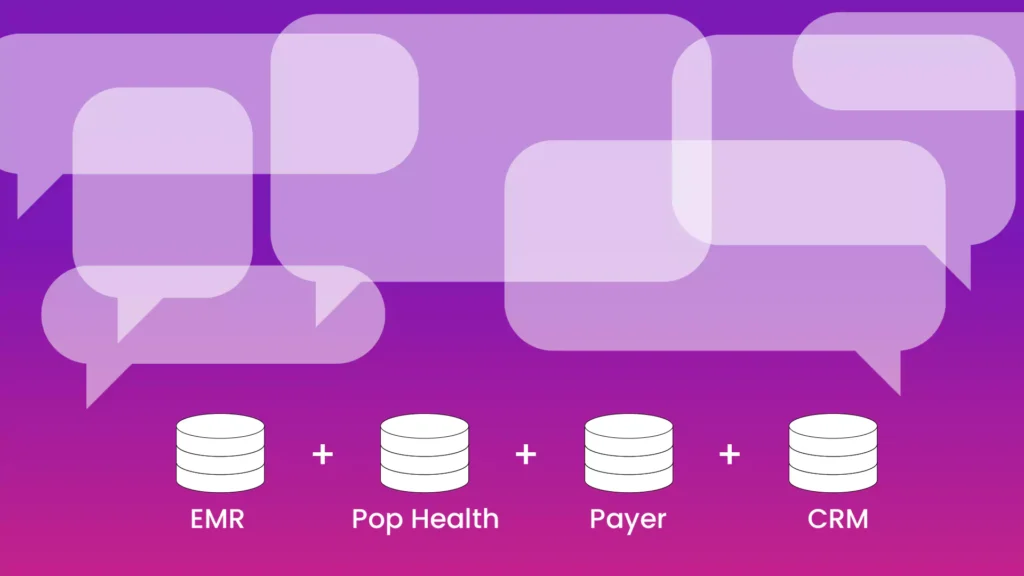If you haven’t yet already, please check out our two previous blogs covering the first two best practices related to governance: Identify Existing – or Future – Challenges and Review the Current State of Patient Communications.
Healthcare organizations face a myriad of challenges in managing patient communications effectively. The key to mastering this complex task lies in an often-overlooked strategy: establishing a healthcare governance committee committed to patient communications – the third best practice in Your Guide to Governance.
What is a Governance Committee?
Rooted in the heart of a health system, the Patient Communications Governance Committee is a dedicated team that oversees and manages a holistic view of patient communications. The healthcare governance team consists of key stakeholders from various departments, who collectively review and devise the messaging strategy, evaluate vendor relationships, map out communication sequences, analyze data and uncover opportunities for improvement in terms of a patient engagement framework.
The committee’s main goal? To streamline healthcare communication, reduce message clutter, escalate patient engagement, ensure regulatory compliance and ultimately enhance the patient experience.
Members of this committee have a range of clear and well-defined roles. At the helm of the governance committee is the Executive Sponsor, who leads the team, followed by dedicated members covering departments such as data and analytics, patient experience, administration, legal and compliance and more. Together, they develop messaging guidelines that align with the organization’s standards and patient engagement framework, ensure regulatory adherence and factor in patient feedback into decision-making.
Steps to Build Your Own Healthcare Governance Committee
As you build out your committee, here are several questions to consider:
- Who are the stakeholders with influence on and interest in a program like this?
- What departments should be represented?
- How do we ensure that the patient perspective is taken into account?
In order to successfully build your own governance committee, you must first start off by identifying the stakeholders who may have influence and interest in the program. Next, decide which departments need to be represented, making sure to incorporate those that reflect the patient’s perspective. From there, establish a structure that assigns roles and responsibilities to each member, akin to the Executive Sponsor, Data & Analytics, Patient Experience, Administration, Legal and Compliance roles – among others – mentioned.
The next step is to define the primary goals, set measures for success and assign continual responsibilities to each role. These crucial actions ensure that the committee consistently analyzes and optimizes their organization’s patient engagement framework.
Below is a list of a few suggested departments and responsibilities:
- Executive Sponsor: Liaison to the executive team, defines key goals and measures for success, leads regular group discussions to review messaging strategy
- Data & Analytics: Monitors success through defined metrics and analytics, reviews and uses data to support new messaging proposals and/or for retiring old messages, identifies any gaps toward goals based on data
- Administration: Documents ongoing messaging strategy, documents proposals for new messaging and/or retiring old messages, work with data to identify improvements to operational workflows
- Patient Experience / Patient Access: Develops roadmap to executive committee’s decisions by mapping out messaging cadence, sequence and timing; ensures the voice of the patient is heard, surfaces any relevant patient feedback on messaging
While creating a governance committee might feel like a challenging endeavor, it is an invaluable asset for health systems looking to reduce over-messaging and streamline patient messaging. By following these best practices for healthcare governance, organizations can navigate patient communication more effectively, keep up with ever-changing regulations and ultimately improve the overall patient experience.
Benefits of a Governance Committee
One of the key advantages of a healthcare governance committee is its ability to centralize decision-making and oversight of patient communications. With representatives from various departments, this committee can ensure that all messaging aligns with the organization’s overall goals and standards. Additionally, having a dedicated team monitoring communication data and patient feedback allows for quick identification of areas for improvement and implementation of changes.
“It really helped to have the same shared vision. Partnerships are built by continuous effort. Organizationally, you have to eliminate the walls between IT and the business – we’re all in this together.”
Enterprise Healthcare Provider (Artera Customer)
Moreover, a governance committee also serves as a safeguard against potential compliance issues. With regulatory requirements constantly changing, having a team focused on ensuring adherence to these regulations is crucial for healthcare organizations.
Continue Your Healthcare Governance Journey
In today’s digital age, effective patient communication is more important than ever. Now that you understand the vital role of a governance committee, start on your journey to streamline communications, foster patient engagement and enhance patient experiences. Remember, involving the right stakeholders, following a well-defined structure and setting clear goals are your stepping stones toward successfully establishing a solid healthcare Governance Committee. So, take the leap today and see the positive impact it has on your organization’s patient communications.
Stay tuned for the next best practice in navigating healthcare governance: Define the Desired Outcomes.



